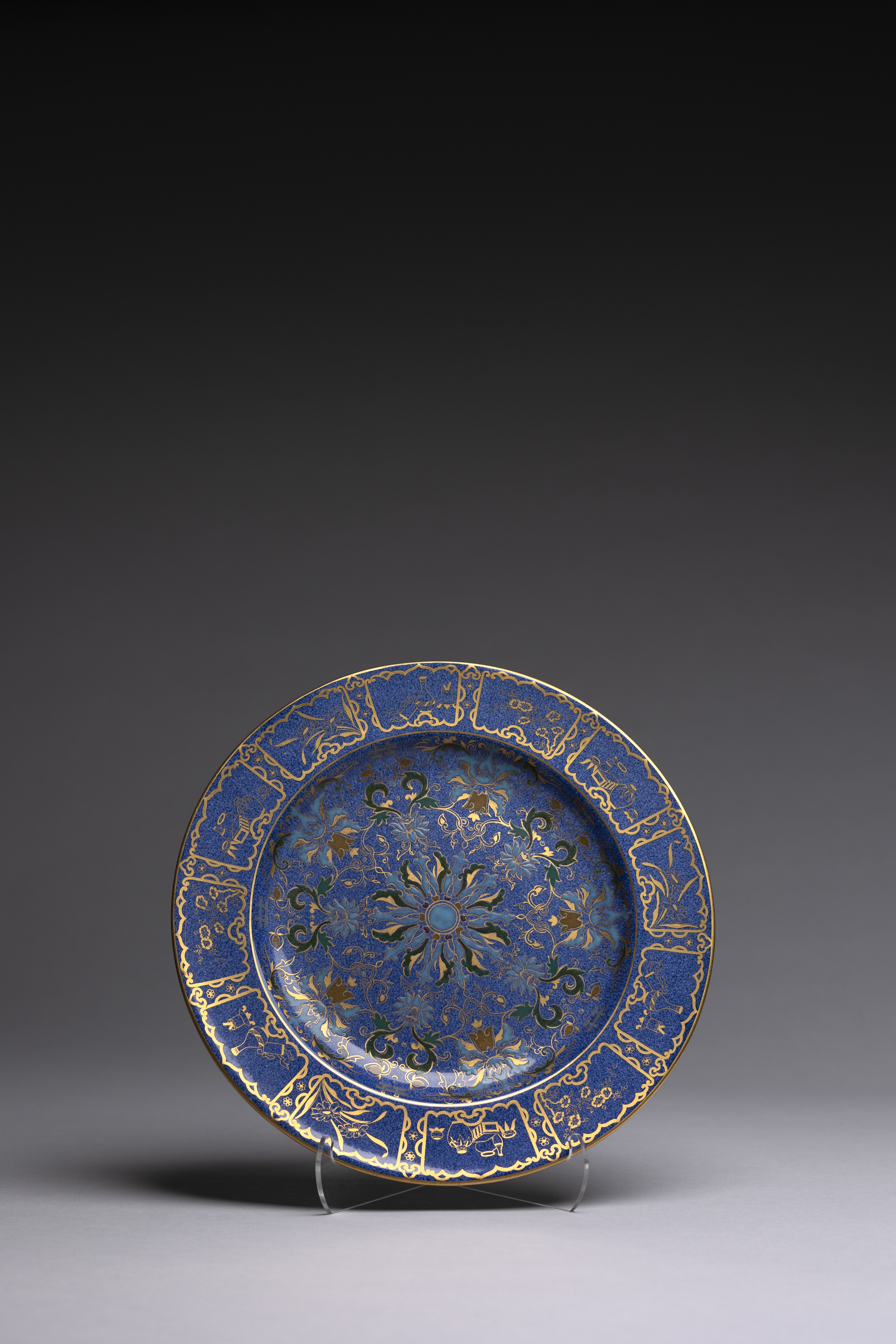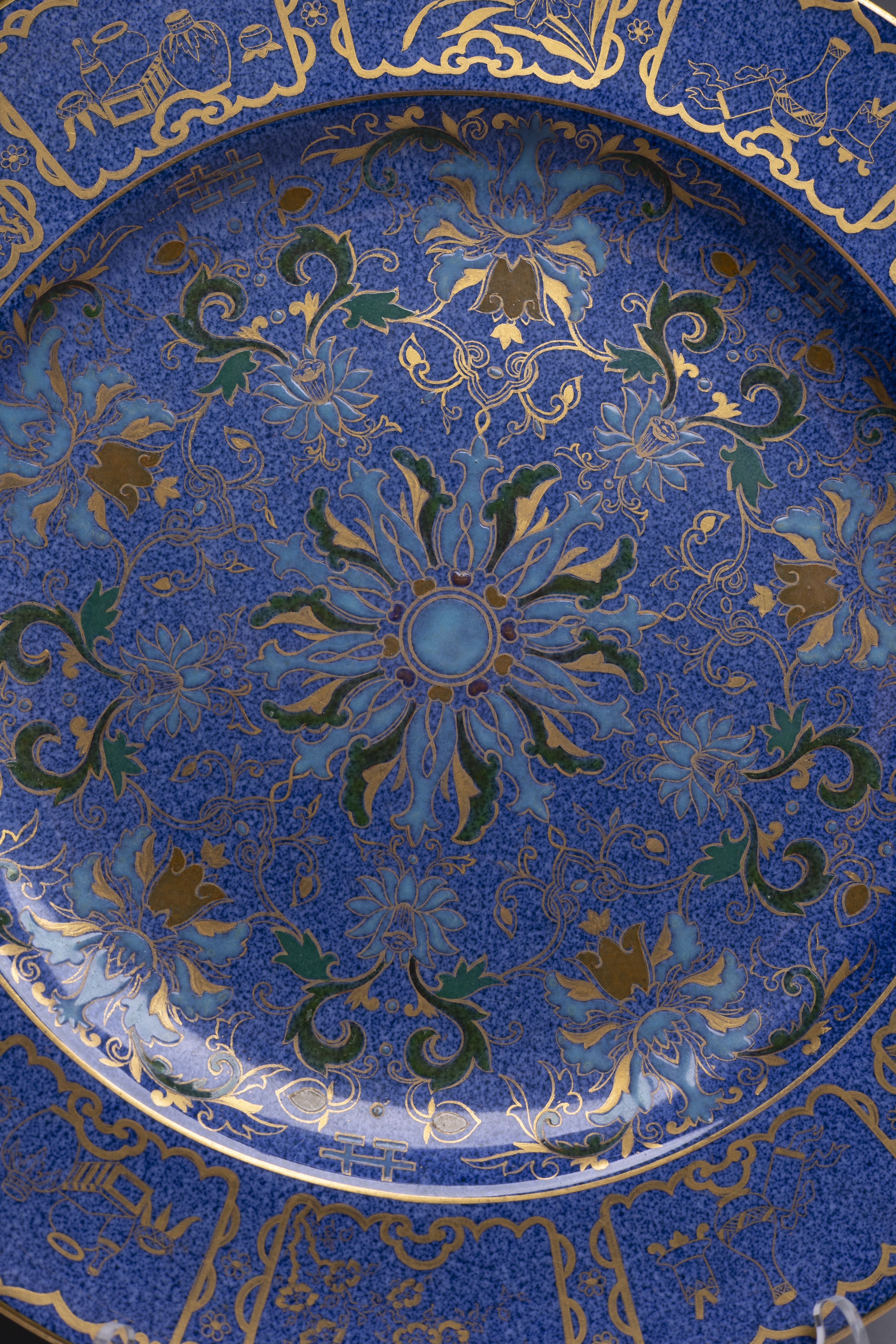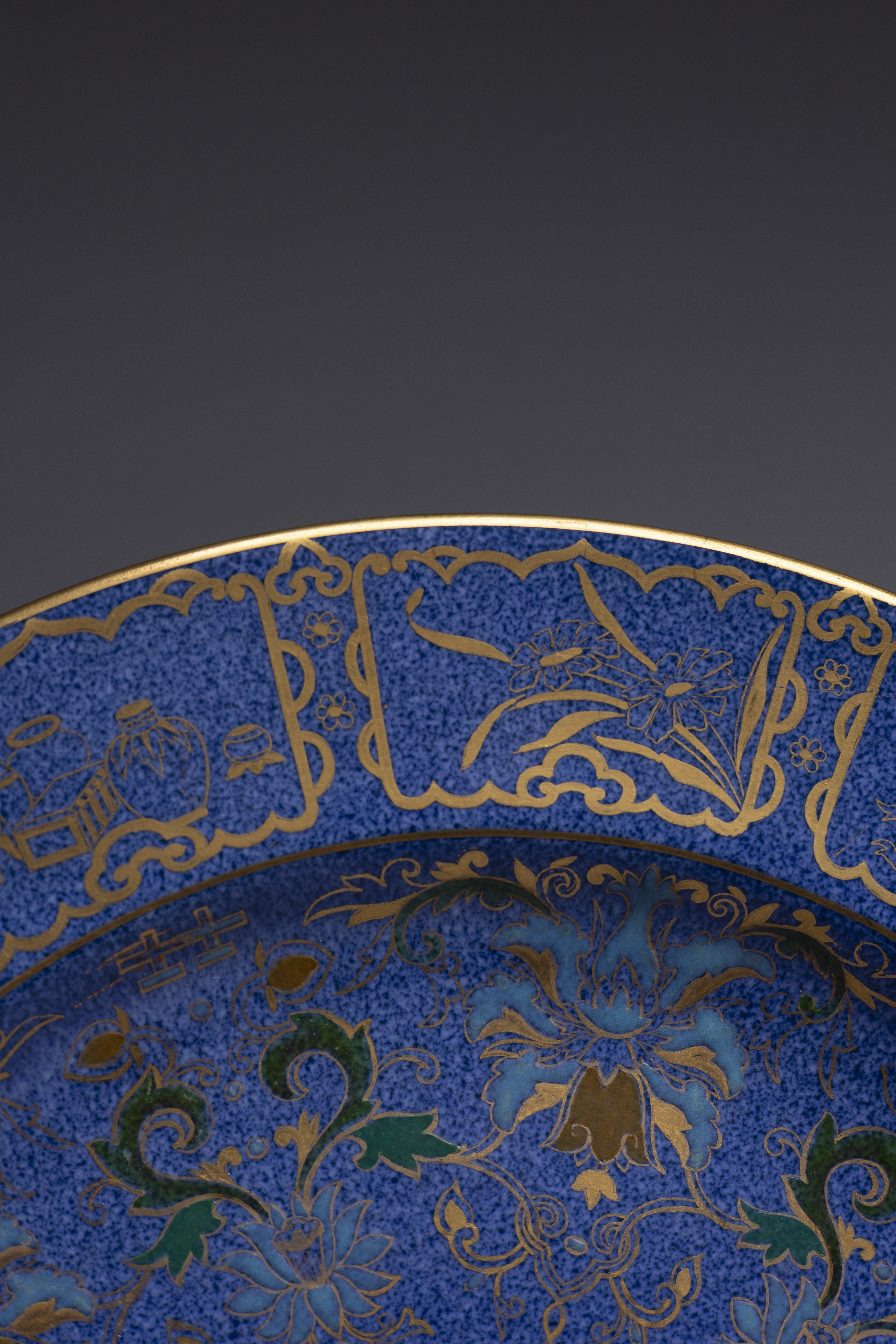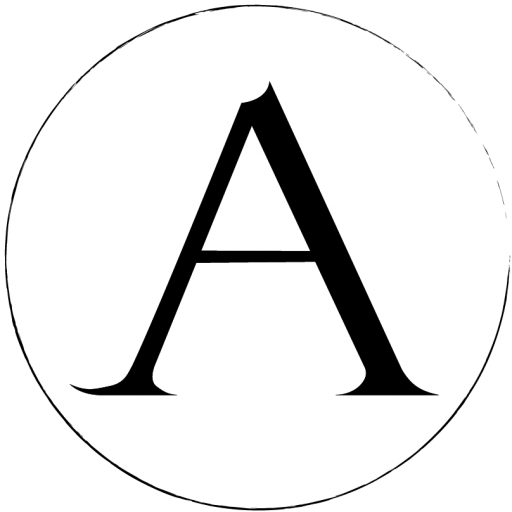Essay
Hand-painted by Mabel Tatton for Wedgwood circa 1912, this cabinet plate features a central design rendered as an intricate tapestry, with gilded decoration showing a colorfully enamelled floral pattern. The border is equally ornate with alternating cartouches of blossoming flowers and scenes of chinoiserie decorative objects (perhaps the scenes from the Hundred Antiques, a decorative motif in Chinese art). The stunning design is placed upon a powder-blue ground, an important invention at the Wedgwood factory.
The Wedgwood factory developed its powder blue bone china in 1912, taking for its model 18th-century Chinese bleu soufflé porcelains with a chuiqing (‘blown blue’) glaze and gilded designs. In order to achieve an air-brushed effect, artisans at the Jingdezhen kilns blew powdered cobalt onto unglazed biscuit through a bamboo shoot that had a piece of very thin silk gauze at the end. A second firing secured the powder onto the piece. Chinese powder-blue wares were popular in both the Middle East and in Europe, there reserved for the homes of the upper class.
At Wedgwood, a team of the company’s four leading figures was tasked with recreating the Chinese powder-blue glaze for a middle-class market of consumers. The group, comprised of John Goodwin, James Hodgkiss, George Adams, and Bernard Moore, borrowed an 18th-century Chinese bleu soufflé piece from the Victoria & Albert Museum for thorough research and imitation. By 1912, the men were able to replicate Chinese bleu soufflé by stippling cobalt on a glazed surface with a sponge; commercial production of powder-blue ware began in August of that year.
As is unfortunately common with most women working in potteries, little is currently known about Mabel Tatton. She began working at Wedgwood as a decorator in 1907 (at the age of 22) and left in 1914 to study at Hornsey College in Middlesex. She then returned to the factory as the head of the painting and enameling department from 1920 to 1928; her excellence in this field is evidenced by a showing of her work at the 1925 Paris Exhibition. We can attribute this dish to Tatton as a vase with an identical pattern has been discovered with her artist’s mark. As it was rare for artists at Wedgwood to be allowed to sign their work, this indicates a particular admiration at the factory for Tatton’s accomplished artistry.
Within this timeline it is almost certain that Tatton would have worked closely with Daisy Makeig-Jones, whose Ordinary and Fairyland Lustre lines required multiple rounds of specialized glazing and painting. It is fascinating to think about the potential collaborations between these two women who held such positions of authority in a male-dominated industry and certainly warrants further investigation and study.
BT
Condition
Excellent.
For a detailed condition report, please contact us.
Literature
Maureen Batkin, Robert Dalrymple, et al, Ravilious & Wedgwood (Dalrymple Press: London, 1986), p. 118, pl. XLV for a vase in the same decoration.
Hand-painted by Mabel Tatton for Wedgwood circa 1912, this cabinet plate features a central design rendered as an intricate tapestry, with gilded decoration showing a colorfully enamelled floral pattern. The border is equally ornate with alternating cartouches of blossoming flowers and scenes of chinoiserie decorative objects (perhaps the scenes from the Hundred Antiques, a decorative motif in Chinese art). The stunning design is placed upon a powder-blue ground, an important invention at the Wedgwood factory.
The Wedgwood factory developed its powder blue bone china in 1912, taking for its model 18th-century Chinese bleu soufflé porcelains with a chuiqing (‘blown blue’) glaze and gilded designs. In order to achieve an air-brushed effect, artisans at the Jingdezhen kilns blew powdered cobalt onto unglazed biscuit through a bamboo shoot that had a piece of very thin silk gauze at the end. A second firing secured the powder onto the piece. Chinese powder-blue wares were popular in both the Middle East and in Europe, there reserved for the homes of the upper class.
At Wedgwood, a team of the company’s four leading figures was tasked with recreating the Chinese powder-blue glaze for a middle-class market of consumers. The group, comprised of John Goodwin, James Hodgkiss, George Adams, and Bernard Moore, borrowed an 18th-century Chinese bleu soufflé piece from the Victoria & Albert Museum for thorough research and imitation. By 1912, the men were able to replicate Chinese bleu soufflé by stippling cobalt on a glazed surface with a sponge; commercial production of powder-blue ware began in August of that year.
As is unfortunately common with most women working in potteries, little is currently known about Mabel Tatton. She began working at Wedgwood as a decorator in 1907 (at the age of 22) and left in 1914 to study at Hornsey College in Middlesex. She then returned to the factory as the head of the painting and enameling department from 1920 to 1928; her excellence in this field is evidenced by a showing of her work at the 1925 Paris Exhibition. We can attribute this dish to Tatton as a vase with an identical pattern has been discovered with her artist’s mark. As it was rare for artists at Wedgwood to be allowed to sign their work, this indicates a particular admiration at the factory for Tatton’s accomplished artistry.
Within this timeline it is almost certain that Tatton would have worked closely with Daisy Makeig-Jones, whose Ordinary and Fairyland Lustre lines required multiple rounds of specialized glazing and painting. It is fascinating to think about the potential collaborations between these two women who held such positions of authority in a male-dominated industry and certainly warrants further investigation and study.
BT
Excellent.
For a detailed condition report, please contact us.
Maureen Batkin, Robert Dalrymple, et al, Ravilious & Wedgwood (Dalrymple Press: London, 1986), p. 118, pl. XLV for a vase in the same decoration.
This item ships free to the continental US, and globally for a flat-rate fee of $50.
All objects are packed with utmost care by our team of expert fine art shippers. All items are shipped with parcel insurance.
For more information on our shipping policies, please visit our FAQ Page.
An essay for this object is forthcoming. Sign up for our email list to be the first to know when this essay is published!
Thank you!
You have successfully joined our subscriber list.





